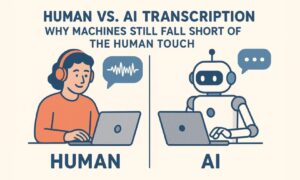Welcome to the world of supercomputers, where the fusion of size and power leads us on an enthralling journey through technological progress. From the colossal machines of yesteryears that occupied entire rooms to the contemporary compact powerhouses that can fit in your palm, the evolution of supercomputers has been a remarkable saga. In this exploration, we will uncover how these formidable devices have transformed industries worldwide and reshaped our lives. Prepare to be astonished by the breathtaking strides that have propelled these machines from their massive origins to their current compact prowess!
Introduction to Supercomputers
Supercomputers, the apex of computing power, cater to tasks demanding extensive calculations. They find their niche in scientific and engineering domains, where the complexity of calculations is beyond the scope of regular computers.
Emerging in the 1960s, supercomputers of yore were unwieldy, costly, and energy-intensive. With time, they’ve evolved into compact, energy-efficient devices. Modern supercomputers can be accommodated within a standard server rack and boast significantly reduced power consumption.
The zenith of supercomputing prowess rests in the capacity to execute billions of calculations per second. Achieving this, they employ hundreds or even thousands of processors operating in tandem. Each supercomputer is custom-crafted for specific applications, rendering them distinct from one another.
Although dubbed “supercomputers,” these machines share similarities with regular computers. The divergence lies primarily in raw processing power and memory capacity. However, this doesn’t render supercomputers universally superior; regular computers excel in numerous tasks that supercomputers can’t outmatch.
Historical Timeline of Supercomputers
The origins of the electronic computer trace back to the 1940s with the creation of ENIAC, capable of 5,000 calculations per second and weighing 30 tons. Subsequent milestones include the 1951 UNIVAC, performing 1,000 calculations per second, and the 1955 IBM 704, scaling up to 100 million calculations per second. IBM’s System/360 mainframes (1964) broke the billion calculations per second barrier.
In 1973, CRAY Research unveiled the CRAY-1, processing 60 million calculations per second and pioneering Freon-based cooling. The CRAY-2 (1976) doubled its predecessor’s speed using bubble memory. The NEC SX-2 (1981) achieved 200 million calculations per second. Intel’s iPSC/860 (1985) laid the groundwork for massively parallel processing.
The CRAY-3 (1986) introduced array processors, propelling it to one trillion operations per second. The 1993 Paragon from Intel marked the beginning of scalable supercomputers.
Current State of Supercomputer Technology
Supercomputers, exemplifying peak computing velocity, cater to intricate domains like weather forecasting, climate research, oil exploration, molecular modeling, and large-scale data analysis. They’re vital for crafting animated movies, video games, and data analytics.
Two primary supercomputer categories emerge: vector processors and scalar processors. While vector processors manage multiple calculations concurrently, scalar processors handle tasks one by one. Contemporary supercomputers often blend both processor types.
Seymour Cray’s CDC 6600 (early 1960s) marked the inception of supercomputers, processing three million calculations per second. His subsequent creations, such as the CDC 7600 and the CRAY-1, further advanced supercomputing capabilities. The CRAY-1, commercially successful, executed up to one billion calculations per second and revolutionized science and engineering.
Scalar processor-based supercomputers also burgeoned in the 1980s, exemplified by Connection Machine CM-1 and CM-2.
Advantages of Supercomputers
Supercomputers proffer several advantages compared to conventional computers:
Accelerated Speed and Processing: Supercomputers operate faster, executing calculations and data processing with swiftness due to their numerous processors and higher clock speeds.
Ample Memory Capacity: These devices possess vast memory capacities, accommodating substantial data and information. This is crucial for efficient handling of large datasets.
Enhanced Precision: Enhanced processing power and memory capacity enable supercomputers to deliver precise calculations and results, critical for tasks with slender margins for error.
Parallel Processing: Supercomputers, often designed for parallel processing, divide tasks among multiple processors, optimizing efficiency for intricate operations.
Challenges and Prospects for Future Development
Supercomputers have undergone substantial evolution, yet several challenges remain. Power consumption poses a significant hurdle, with these machines demanding massive electricity inputs. The size and weight of supercomputers also hamper widespread utility, limiting their application. Furthermore, their high costs restrict accessibility to well-funded entities.
Notwithstanding these challenges, progress is evident in energy-efficient designs and cooling solutions. Miniaturization techniques promise smaller, more portable supercomputers. As innovations persist, the trajectory of supercomputers toward enhanced power and broader application continues.
Conclusion
The trajectory of supercomputers from their colossal beginnings to their compact present is a testament to technological advancement. The applications span from research and development to everyday life, and the evolution continues with advances like quantum computing and artificial intelligence. The future of supercomputing holds promise and excitement for technology enthusiasts everywhere.



































